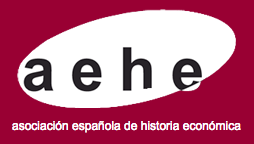La tasa de actividad femenina en el siglo xviii en dos municipios andaluces: Laujar de Andarax (Almería) y Úbeda (Jaén)
DOI:
https://doi.org/10.1016/j.ihe.2015.08.001Palabras clave:
Tasa de actividad femenina, Desigualdad del mercado laboral, Andalucía, Siglo xviii, J16, J21, J82, R23Resumen
Este artículo reconstruye la tasa de actividad femenina de Laujar de Andarax (Almería) y Úbeda (Jaén), ambos en Andalucía, a mediados del siglo xviii, representativos de la actividad manufacturera ligada al textil lanero en el sur de España. Con los memoriales del Catastro de Ensenada de 1751-1752 se ha elaborado una base de datos de 12.195 habitantes. Se establecen correlaciones entre la tasa de actividad femenina y los factores de demanda: economías locales con importancia relativa del sector secundario y terciario, especialmente el textil, y con los de oferta: ciclos de vida, estado civil, número de hijos, ocupación y edad de los maridos. La tasa de actividad femenina en Laujar era del 54,2%, y en Úbeda, del 27,4%, con un modelo de ocupación predominante en el sector textil y en el servicio doméstico. La perspectiva local muestra que los factores de demanda tienen una influencia mayor que los de oferta.
Descargas
Descargas
Cómo citar
Número
Sección
Licencia
Aquellos autores/as que tengan publicaciones con esta revista, aceptan los términos siguientes
- Los autores/as conservarán sus derechos de autor y garantizarán a la revista el derecho de primera publicación de su obra, el cuál estará simultáneamente sujeto a la Licencia de reconocimiento de Creative Commons Reconocimiento-No comercial-Sin obra derivada 4.0 Internacional que permite a terceros compartir la obra siempre que se indique su autor y su primera publicación esta revista, y no permite hacer uso comercial de la misma ni tampoco obras derivadas.
- Los autores/as podrán adoptar otros acuerdos de licencia no exclusiva de distribución de la versión de la obra publicada (p. ej.: depositarla en un archivo telemático institucional o publicarla en un volumen monográfico) siempre que se indique la publicación inicial en esta revista.
Plagio y fraude científico
La publicación de un trabajo que atente contra los derechos de propiedad intelectual será responsabilidad de los autores/as, que serán los que asuman los conflictos que pudieran tener lugar por razones de derechos de autor. Los conflictos más importantes pueden darse por la comisión de plagios y fraudes científicos.
Se entiende por plagio:
- Presentar el trabajo ajeno como propio.
- Adoptar palabras o ideas de otros autores sin el debido reconocimiento.
- No emplear las comillas u otro formato distintivo en una cita literal.
- Dar información incorrecta sobre la verdadera fuente de una cita.
- El parafraseo de una fuente sin mencionar la fuente.
- El parafraseo abusivo, incluso si se menciona la fuente.
Las prácticas constitutivas de fraude científico son las siguientes:
- Fabricación, falsificación u omisión de datos y plagio.
- Publicación duplicada.
- Conflictos de autoría.





